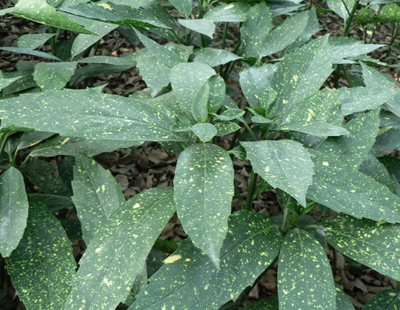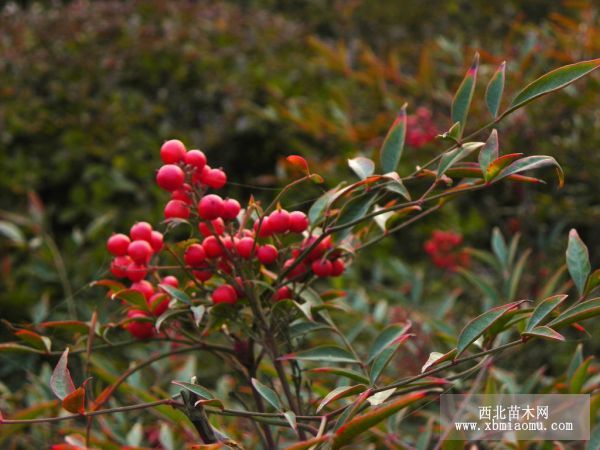Why is it difficult to reproduce and maintain Peach Leaf Coral?
Why is it difficult to reproduce and maintain Peach Leaf Coral? The family potted coral grows poorly and the cuttings are not easy to take root, which is mainly due to the failure to fully understand and master the biological characteristics of the coral. Sajin peach leaf coral is a small shrub of Cornaceae. It has wonderful leaf shape, bright leaf color, thick green leaves scattered with golden patches of different sizes, changing light and dark, green and yellow, so it is a very popular indoor ornamental plant.
Because of its extreme shade resistance and strong resistance to smoke and air pollution, it is especially suitable for indoor decoration in urban families, and its branches and leaves can also be used as cut flower materials. The propagation of Sajin peach leaf coral is mainly by softwood cutting in summer. The semi-lignified green branches of the same year were cut at the beginning of June, and the cuttings with terminal buds and upper 3-4 leaves were the most likely to take root. The best proportion of rice husk ash and fine sand for cutting substrate is 1:1. Put the evenly mixed cutting substrate into a large flowerpot or strip trough, generally with a thickness of 20cm to 30cm, and insert the cut cuttings into the substrate according to the plant row spacing of 5cm × 5cm, with a depth of about 1pm, 2cm, 3pm, only expose the upper part of the cuttings and leaves outside the substrate, and often spray water to keep the substrate moist.
It is best to cover the plastic film to moisturize and give shade in the shed at the same time. Usually after half a month, milky healing tissue can be formed on the wound, and the intact root system can be differentiated in about a month, and then it can be divided into plants or pots after 20-30 days. Sprinkling peach leaf coral likes shade and dampness, so in the process of maintenance, it is necessary to keep the basin soil moist and moderate shade. It grows well in well drained, loose and fertile basin soil. Because it is not very hardy in winter, it is cultivated in the north of Huaihe River and can survive the winter safely indoors.
Afraid of hot sunburn in summer, you can keep it indoors for a long time. Throughout the growing season, cake fertilizer and water are poured every semimonthly and placed on the balcony to receive sunlight in the morning and evening. The leaves are often sprayed with water in the hot season, so that the leaves can be kept fresh and bright for a long time.
Why is it difficult to reproduce and maintain Peach Leaf Coral? Why is it difficult to reproduce and maintain Peach Leaf Coral?
Why is it difficult to reproduce and maintain Peach Leaf Coral? The family potted coral grows poorly and the cuttings are not easy to take root, which is mainly due to the failure to fully understand and master the biological characteristics of the coral. Sajin peach leaf coral is a small shrub of Cornaceae. It has wonderful leaf shape, bright leaf color, thick green leaves scattered with golden patches of different sizes, changing light and dark, green and yellow, so it is a very popular indoor ornamental plant.
Because of its extreme shade resistance and strong resistance to smoke and air pollution, it is especially suitable for indoor decoration in urban families, and its branches and leaves can also be used as cut flower materials. The propagation of Sajin peach leaf coral is mainly by softwood cutting in summer. The semi-lignified green branches of the same year were cut at the beginning of June, and the cuttings with terminal buds and upper 3-4 leaves were the most likely to take root. The best proportion of rice husk ash and fine sand for cutting substrate is 1:1. Put the evenly mixed cutting substrate into a large flowerpot or strip trough, generally with a thickness of 20cm to 30cm, and insert the cut cuttings into the substrate according to the plant row spacing of 5cm × 5cm, with a depth of about 1pm, 2cm, 3pm, only expose the upper part of the cuttings and leaves outside the substrate, and often spray water to keep the substrate moist.
It is best to cover the plastic film to moisturize and give shade in the shed at the same time. Usually after half a month, milky healing tissue can be formed on the wound, and the intact root system can be differentiated in about a month, and then it can be divided into plants or pots after 20-30 days. Sprinkling peach leaf coral likes shade and dampness, so in the process of maintenance, it is necessary to keep the basin soil moist and moderate shade. It grows well in well drained, loose and fertile basin soil. Because it is not very hardy in winter, it is cultivated in the north of Huaihe River and can survive the winter safely indoors.
Afraid of hot sunburn in summer, you can keep it indoors for a long time. Throughout the growing season, cake fertilizer and water are poured every semimonthly and placed on the balcony to receive sunlight in the morning and evening. The leaves are often sprayed with water in the hot season, so that the leaves can be kept fresh and bright for a long time.
In the peach leaf coral family, there is only one genus Aucuba, with about 3-10 species, all growing in East Asia, distributed from the eastern tip of the Himalayas to Japan, evergreen shrubs or small trees (2-13 m high), simple leaves opposite, leathery, similar to laurel in appearance, 8-25 cm long, 2-7 cm wide, dioecious, flowers 4-8 mm in diameter and petals 4; fruit is a red berry, about 1 cm in diameter.
In 1981, the genus Prunus was classified as Cornaceae by Cronquist classification. In 1998, Prunus was classified as a separate family according to the APG classification of genetic relationship, which was placed under the order Cerambycidae. In 2003, according to the APG II classification of genetic relationship, it was considered that the undergraduate course could be selectively combined with the family Cerambycidae.
At present, it has been introduced as an ornamental plant, the most famous of which is Aucuba japonica Variegata, which has yellow stars on its leaves and is a famous ornamental plant.
Reproductive Management of Peach Leaf Coral

The propagation of Sajin peach leaf coral is mainly by softwood cutting in summer. The semi-lignified green branches of the same year were cut at the beginning of June and cut into ear segments with a length of 10 Mel and 15 cm, with terminal buds and 4 upper 3 Mel leaves, which were most likely to take root. The best proportion of rice husk ash and fine sand for rod planting substrate is 1:1. The evenly mixed cutting substrate is loaded into a large flowerpot or strip trough, with a thickness of 20ml / 30cm, and the former cuttings are inserted into the substrate according to the plant spacing of 5 × 5cm. The depth of the cuttings is about 1gamma, which is about the length of the spike, leaving only the upper part of the cuttings and leaves outside the soil, often spraying water to keep the substrate moist. Usually after half a month, milky healing tissue can be formed on the wound, and intact roots can be differentiated in about a month. After another 30 days, it can be planted separately or put on the pot.
Sprinkling peach leaf coral likes shade and dampness, so in the process of maintenance, it is necessary to keep the basin soil moist and moderate shade. It grows well in well-drained, loose and fertile basin soil. It is not very hardy in winter and needs to be indoors to survive the winter safely. Afraid of hot sunburn in summer, you can keep it indoors for a long time. Throughout the growing season, the cake is watered every semimonthly, placed on the balcony to receive sunlight in the morning and evening, and the leaves are often sprayed with water in the hot season, so as to keep the leaves fresh and bright for a long time.
- Prev

Why doesn't Phyllostachys pubescens emerge for a long time when sowing?
The seed of Phyllostachys pubescens is a physiological post-mature seed with incomplete embryo development, which must be accelerated by moisturizing sand storage for a long time in order to promote its embryo to grow to normal size and then germinate. It is suitable to harvest plump fruits that are fully ripe and about to fall off from January to February, mix them with coarse sand and knead them to remove the peel and pulp.
- Next

How do you raise Zhu Jiao?
How do you raise Zhu Jiao? Good Zhu banana trunk tall and straight, bright leaves, tufted leaves like an umbrella, posture is very elegant, is an excellent indoor foliage plant. In order to make the plant shape plump, Zhu Jiao should pay attention to the following points: Zhu Jiao likes a warm and humid environment, but he can also tolerate shade and is not resistant to cold and frost.
Related
- Fuxing push coffee new agricultural production and marketing class: lack of small-scale processing plants
- Jujube rice field leisure farm deep ploughing Yilan for five years to create a space for organic food and play
- Nongyu Farm-A trial of organic papaya for brave women with advanced technology
- Four points for attention in the prevention and control of diseases and insect pests of edible fungi
- How to add nutrient solution to Edible Fungi
- Is there any good way to control edible fungus mites?
- Open Inoculation Technology of Edible Fungi
- Is there any clever way to use fertilizer for edible fungus in winter?
- What agents are used to kill the pathogens of edible fungi in the mushroom shed?
- Rapid drying of Edible Fungi

